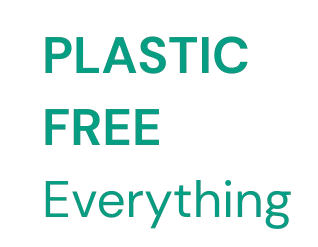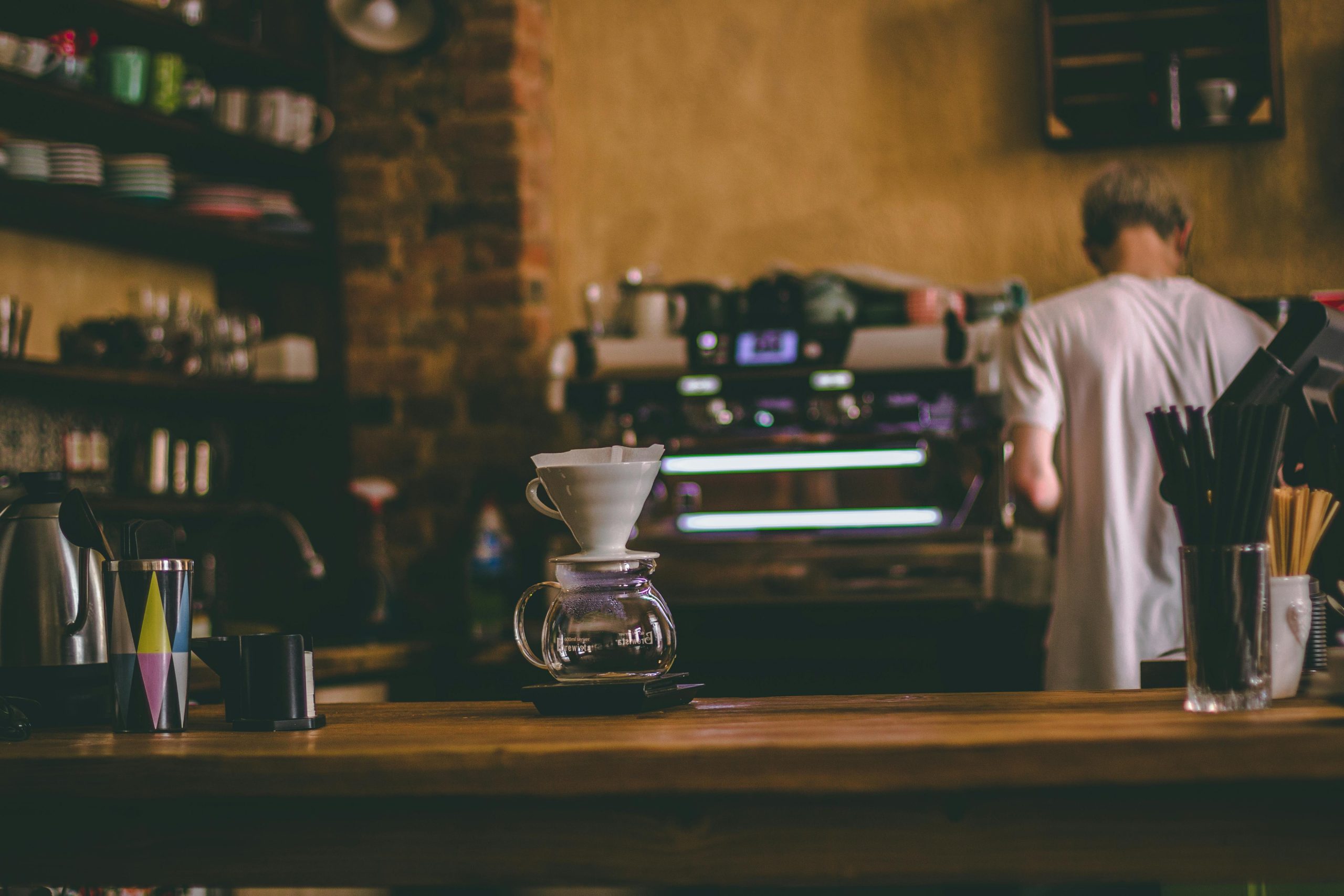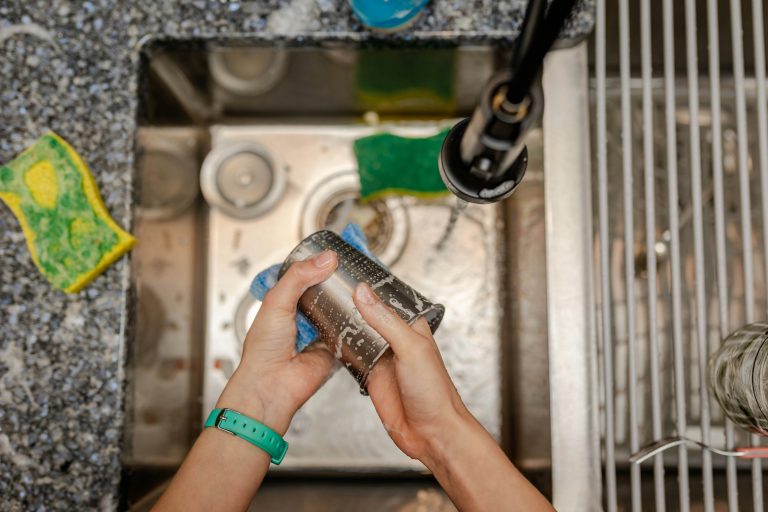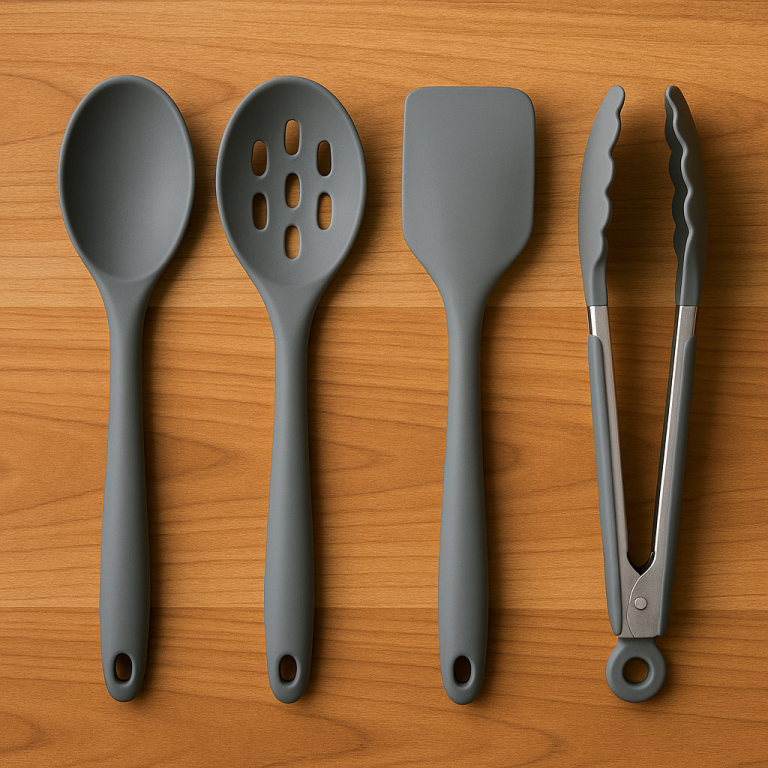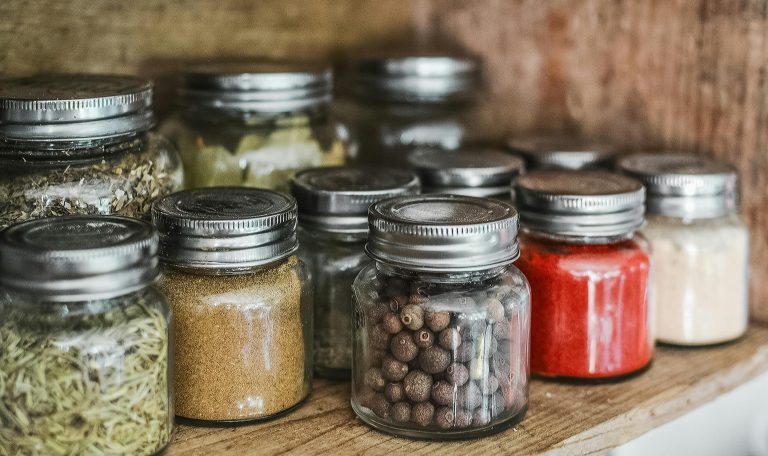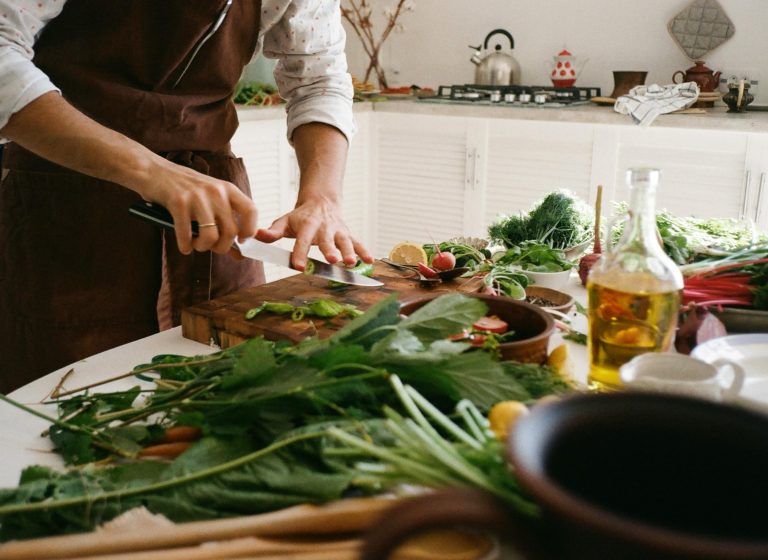Say No to Microplastics in Your Morning Cup of Coffee: Safer Brewing Tips and Our Favorite Plastic Free Coffee Makers
You know that sacred, slow ritual of making your morning coffee? The comforting smell, the quiet anticipation, maybe even the clink of a spoon against a favorite mug. Now picture this: along with that smooth pour and warm aroma, you could be drinking… plastic.
It sounds dramatic, but it’s real. Microplastics are creeping into more of our daily habits than we realize, and yes, that includes our coffee.
If you’re trying to live a little cleaner, feel a little better, or just want to protect what goes in your body (and back out into the world), it might be time to rethink your coffee setup. So, let’s talk about how those sneaky plastic particles get in, how to keep them out, and the coffee gear that actually has your back.
Key Takeaways
Plastic is Sneaking Into Your Morning Brew
Even without realizing it, your coffee routine is probably exposing you to microplastics. Plastic-based gear like single-serve pods, plastic filter baskets, or plastic pour-over cones will all leach microplastics into what you drink.
Heat Makes It Worse
Hot water accelerates the release of microplastics and chemical leaching from plastic parts. Brewing at near-boiling temperatures (like most of us do) can release up to 55x more BPA into your drink.
There Are Safe, Plastic-Free Ways to Brew
From pour-overs to French presses—there are plastic-free options that work just as well (and often taste even better).
Ceramic, Stainless Steel, and Glass Are Your Best Friends
Look for brewing tools made with non-reactive materials like ceramic coffee drippers, stainless steel French presses, and glass cold brew makers. They’re safer, more sustainable, and look great on the counter too.
You Don’t Have to Go All In Right Away
Start small—swap out a plastic filter, ditch the pods, try a stainless steel mesh instead of a plastic basket. Every little change helps reduce microplastics in your cup and your environment.
So, How Do Microplastics Sneak Into Your Coffee?
It’s not like you’re dropping shredded water bottles into your cup, right? But the way microplastics show up is far more subtle, and honestly, kind of frustrating.
A lot of modern coffee gear has plastic parts. The obvious, single-serve pod machines like Keurig are the absolute worst offender of plastic pollution and waste, but there are other ways that plastic is leeching into your daily cup of coffee. Plastic filter baskets, water reservoirs, plastic pour overs, and even plastic lids on travel mugs all contribute to human consumption of microplastics.
Common Sources of Microplastics from Brewing Coffee Include:
- Single Use Coffee Pods (please please please don’t use these)
- Plastic Water Basins in Automatic Brewers
- Plastic Filter Baskets In Automatic Brewers
- Plastic Pour Overs or Plastic Coffee Drippers
- Plastic Lids to Coffee Cups
When hot water hits those plastic components, they can start shedding tiny particles and leaching microplastics. They end up swirling right into your drink and accumulating into your body, contributing to the issue that the average human being consumes 40,000 – 50,000 microplastic particles per year.
Heating Up Plastic Releases More Microplastics Into the Environment
Here’s the kicker: plastic leeches more tiny microplastic particles and plastic chemicals when it’s heated. According to this video, heating plastic up to 100 degrees C (think soup or boiling water for your cup of coffee) releases up to 55X more BPA and millions of tiny microplastic particles.
So that morning pour you just heated to near-boiling? That’s the perfect storm for microplastic release. Even BPA-free plastics aren’t totally innocent as they will still release microplastics when heated and used.
And look, it’s not just about personal health. All that plastic ends up somewhere. Most plastic coffee gear isn’t recyclable, and a surprising amount ends up in landfills or waterways, breaking down into smaller and smaller pieces. It’s not just in your cup, it’s in the soil, the ocean, even the air.
Brewing Coffee Without the Plastic: Is It Even Possible?
Absolutely, and your coffee might even taste better.
There are plenty of brewing methods that skip the plastic entirely. Some of them are simple; others feel like tiny morning rituals. Let’s break down a few ways you can make your daily brew microplastic-free without giving up flavor or convenience.
Personally, I brew my morning cup using a ceramic coffee dripper paired with #2 unbleached coffee filters that we put into our compost each morning. It brews a strong cup and cleanup is simple.
Pour Over: Simple, Stylish and Delicious
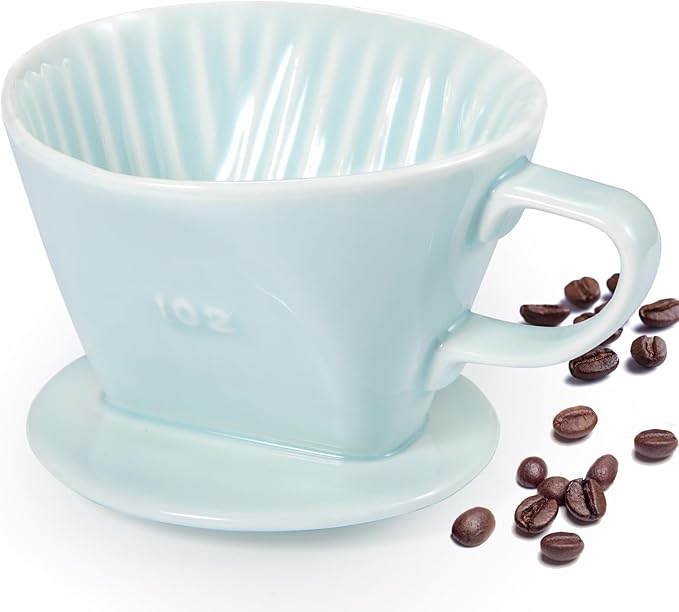
Pour-over lovers, rejoice, this method is practically made for going plastic-free. A ceramic coffee dripper or stainless steel pour over is heat-safe, non-reactive, and built to last. Both options retain heat beautifully and won’t mess with the taste of your coffee.
Not only does pour over coffee taste the best (in my opinion at least), I think this method of brewing coffee has both one of the the lowest barrieres of entry and sustainable ways to brew coffee. There are two ways to do this:
- You just need a ceramic coffee dripper and some unbleached coffee filters OR
- You can purchase a stainless steel reusable filter.
If you’re trying to go zero waste, using a stainless steel reusable filter will be the better option for you. Otherwise, go for unbleached paper filters that don’t have plastic linings (yep, some do) to accompany your ceramic pour over.
Top pick for a Stainless Steel Mesh Net: The AGOGO Pour Over Coffee Maker. It’s affordable and comes with both the Stainless steel filter plus a glass carafe.
Using a French Press to Avoid Harmful Microplastics in your Coffee
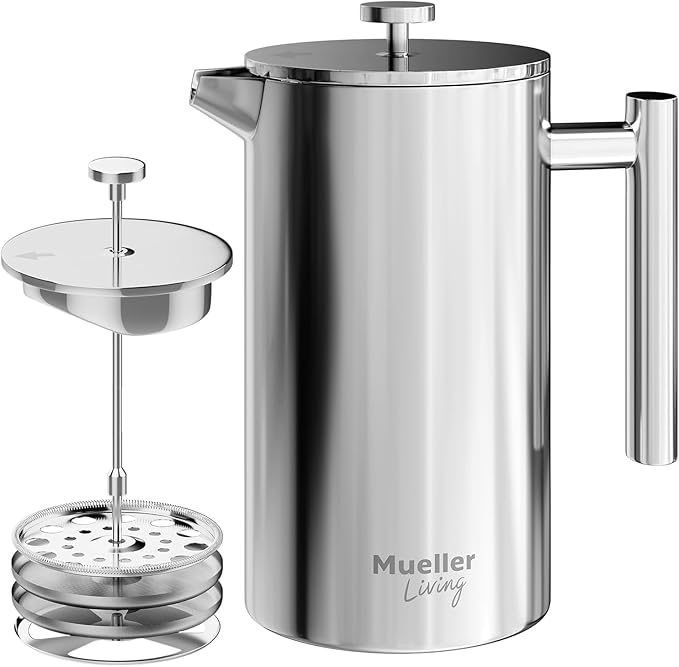
While many lower end French Presses on the market are made with a plastic plunger and feature other plastic components, a Stainless Steel French Press or a Glass French Press with all metal parts is a wonderful plastic free, zero waste option to brew your morning coffee.
I personally prefer a pour over to a French Press because I find it easier to clean up afterwards, but, using a French Press is a sustainable way to brew your coffee and our top Zero Waste Option.
Making coffee with a French Press is also a breeze. The steps are simply:
- Add your coffee grounds into the French press
- Pour in boiling water
- Let the coffee steep for as long as your prefer
- Use the plunger to press the coffee grounds to the bottom of the French press
- Pour!
Top pick: The Frieling Double Wall Stainless Steel French Press. It’s heavy, but it’s built like a tank and keeps your coffee hot.
Cold Brew: No Heat, No Worries
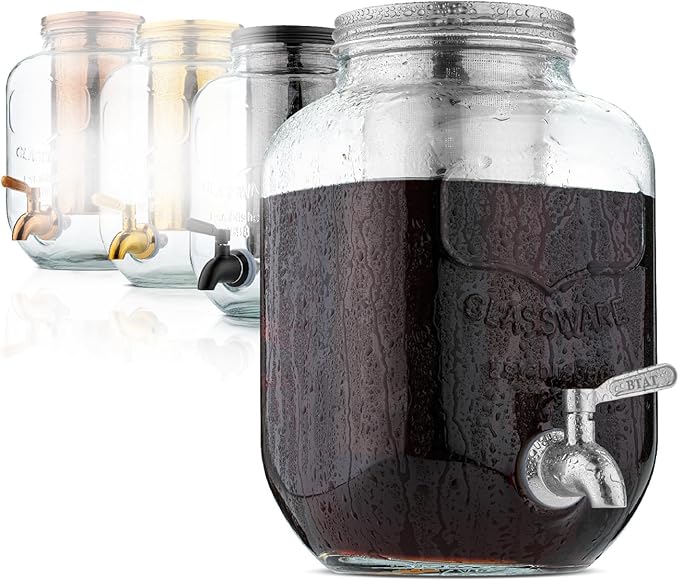
Cold brew fans, you’re already winning. Making cold brew is pretty much the same thing as using a French press, it just takes a lot longer because we’re using cold water instead of hot, so the coffee needs more time to sit in the water before you consume it.
Just steep your grounds in a glass jar with a stainless steel cold brew filter. Let it sit overnight, then strain and enjoy. It’s smooth, naturally sweet, and a perfect summer option (or winter if you’re iced-coffee-all-year kind of person).
There are a LOT of cold brew options on the market that include plastic components, so if you’re in the marketing for a plastic free cold brew coffee maker then do your due diligence before buying.
Top Pick: This one gallon cold brew coffee maker. It makes brewing cold brew easy by doing it in bulk and it’s free of plastic components.
Espresso Drinkers, We Didn’t Forget You
Espresso machines can be tricky. Many have plastic tubing or water tanks that touch hot water and I haven’t been able to find an entirely plastic free espresso machine (yet). That being said, there is a more affordable alternative: Stovetop Espresso Makers.
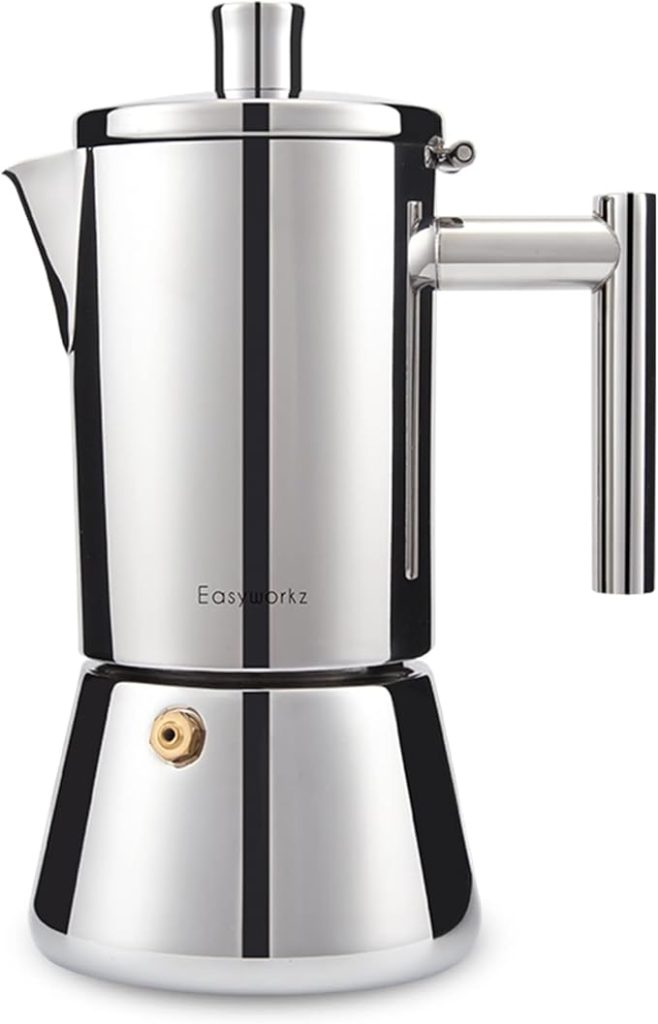
Stovetop espresso makers, like the classic Easyworkz Diego Stovetop Espresso Maker, are oftentimes made of aluminum or stainless steel and work right on the stove. We actually have one of these ourselves and us it anytime we want to make a latte.
Just be on the lookout as many will feature plastic handles. While those are not going to leach microplastics into your latte, if you’re looking for a plastic free option I’d look for ones like the product we’ve featured here.
If you’re craving the full espresso experience and don’t mind a bit of manual labor, look into manual espresso presses. Brands like Flair or Rok make gorgeous, fully manual espresso tools with zero plastic in the brew path. Yes, they’re a little finicky. But isn’t that part of the charm?
Always check the gasket materials as some cheaper stovetop makers have silicone or plastic seals. If possible, look for platinum cured silicone, but steer clear of plastic where you can.
Top Pick: I LOVE the Easyworkz Diego Stovetop Espresso Maker. It’s all stainless steel except for a silicone gasket, looks sleek in my kitchen and doesn’t totally break the bank.
So What Are the Best Plastic-Free Coffee Makers?
Alright, here’s a roundup of our favorite options, depending on your style, space, and caffeine personality:
- Pour Over: AGOGO Pour Over Coffee Maker
- French Press: Frieling Double Wall Stainless Steel French Press
- Cold Brew: This one gallon cold brew coffee maker
- Espresso: Easyworkz Diego Stovetop Espresso Maker
All of these are built to reduce your exposure to microplastics in coffee and reduce waste over time. Bonus? Most of them look beautiful sitting on your counter.
One Last Thing Before You Brew
You don’t have to overhaul your entire coffee ritual overnight. Maybe you start by swapping out your plastic pour over for a ceramic one. Maybe next week you retire the single-use pods for good. It doesn’t have to be all or nothing—just intentional.
Our environment is dealing with enough microplastic pollution to last many lifetimes. If your coffee can taste better, keep you healthier, and cut down on plastic pollution all at once? That’s a win worth brewing for.
So, go ahead—make your coffee. Just maybe, make it a little cleaner.
